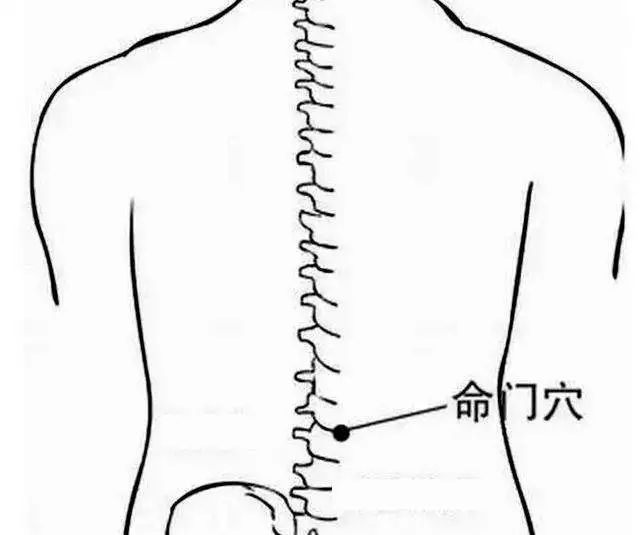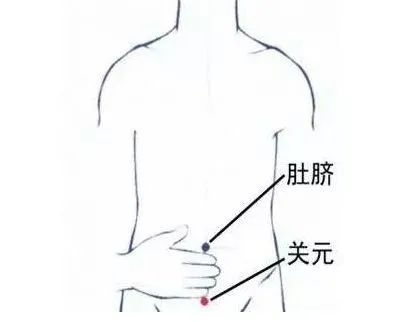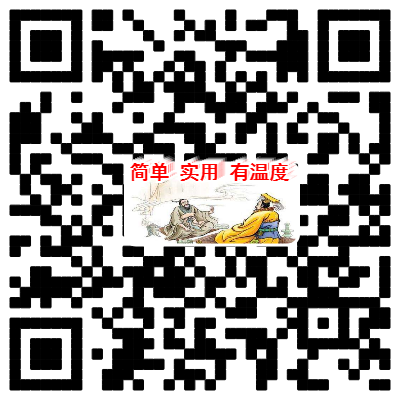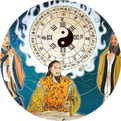Click the blue text above to follow us
Health Preservation in the Inner Canon
Those who understand some knowledge of Traditional Chinese Medicine (TCM) should know that TCM emphasizes dialectical treatment, and the theoretical basis of dialectical treatment is the Eight Principles, which are: Yin and Yang, Exterior and Interior, Cold and Heat, Deficiency and Excess.
Among these, Yin and Yang are the overarching principles, and we must analyze different individuals and diseases from the perspective of the rise and fall of Yin and Yang in the human body.
Some individuals have an imbalance of Yin and Yang in their bodies that remains uncorrected for a long time, leading to the formation of certain fixed constitutions.
These constitutions specifically include the nine basic types: Pinghe constitution (Balanced), Qi deficiency constitution, Yang deficiency constitution, Yin deficiency constitution, Phlegm-damp constitution, Damp-heat constitution, Blood stasis constitution, Qi stagnation constitution, and Special constitution.Among these, Yang deficiency constitution is currently a relatively common state of constitution.
The Inner Canon also states, “Nurturing Yang in spring and summer,” so let’s take a good look at what Yang deficiency is and how to “nurture Yang” to regulate and treat Yang deficiency and change the Yang deficiency constitution?
1
What is Yang Deficiency?
As the name suggests, Yang deficiency refers to a pathological state of insufficient Yang Qi and heat in the human body. When Yang deficiency cannot restrain Yin, Yin becomes relatively excessive, leading to cold symptoms, resulting in the phenomenon of “Yang deficiency leads to cold.”
Check to see if you have Yang deficiency:
(√)Look in the mirror to see if your complexion is pale and slightly swollen;
(√)Do you often feel cold, with hands and feet colder than usual;
(√)Is your daily life relatively quiet, with low energy and a soft voice, and do you prefer curling up while sleeping;
(√)Do you urinate frequently with clear urine;
(√)Is your tongue coating white and enlarged?
Generally, individuals with Yang deficiency will exhibit some of the above symptoms, such as a pale complexion, cold limbs, preference for quietness, curling up, frequent clear urination, and undigested food, which often indicate a deficiency of Yang Qi in the body.
2
The Prevalence of Yang Deficiency
Yang deficiency constitution is very common among the population and is showing an increasing trend, especially among younger individuals.
In the past, Yang deficiency was more common in middle-aged and elderly individuals, but with the expansion of the urban working class, younger groups are gradually showing signs of Yang deficiency, which may be related to long-term exposure to air-conditioned environments, irregular lifestyles, and lack of physical labor.
3
The Importance of Yang Qi
The “Su Wen: Theory of Vital Energy” states: “Yang Qi is like the sky and the sun. If Yang Qi loses its place, it will shorten life and not shine.”
The Inner Canon compares the role of Yang Qi in the human body to that of the sun, and damage to Yang Qi will weaken the body, allowing various pathogens to invade, leading to a shortened lifespan, highlighting the importance of Yang Qi for the human body.
So, how should we protect and enhance Yang Qi? We must first understand the organs closely related to the generation of Yang Qi and understand the underlying mechanisms to effectively nourish it.
The generation of Yang Qi is related to the Spleen, Kidney, and Heart.
1)The Kidney is the “foundation of pre-natal essence,” as stated in the “Ling Shu: Decision on Qi”: “The two spirits interact, combine to form a shape, and are often born before the body, which is called essence.”
This means that the initial essence of the human body is given by the parents, and all the original Yang comes from the Kidney. The Kidney not only stores pre-natal essence but also can store post-natal essence transformed from food, so Yang deficiency is closely related to the Kidney.
2)The Spleen is the foundation of post-natal essence, and the water and grains contained in the stomach and intestines must rely on the Spleen’s transformation to convert them into refined substances, which are then distributed to nourish the body. This is the role of the Spleen as the central organ, performing the function of “irrigating the surroundings.”
It can be said that the generation of post-natal essence greatly depends on the Spleen. Similarly, when the Spleen’s transformation function is impaired, Yang Qi will be insufficient, leading to deficiency.
3) There is also a condition of Heart Yang deficiency, which is less common compared to Spleen and Kidney Yang deficiency.Excessive sweating mentioned earlier may lead to Heart Yang deficiency.This is because sweat is transformed from body fluids, and blood and body fluids originate from the same source, hence the saying “sweat and blood share the same source.”
Blood resides in the Heart, thus sweat is referred to as “the fluid of the Heart.” Additionally, the circulation of blood relies on the Qi of the Heart, so Yang Qi is also closely related to the Heart.
4
What Happens with Yang Deficiency
When Yang Qi is weak, in addition to the previously mentioned symptoms of low energy, cold limbs, frequent clear urination, and undigested food, it will also affect the body’s Yin, Blood, and body fluids.
This is because the Yin and Yang Qi in the human body are not two independent substances; they complement and rely on each other.Continuous damage to Yin fluids will affect the generation of Yang Qi, and continuous consumption of Yang Qi will also affect the generation of Yin fluids.
For example, when Yang Qi is consumed to a certain extent, the insufficient Yang Qi on the exterior cannot perform its function of “warming the flesh, nourishing the skin, and regulating the openings and closings,” leading to a lack of surface stability, excessive sweating, and loss of body fluids.
Moreover,long-term Yang deficiency leads to insufficient Zheng Qi, making the body susceptible to external pathogens, resulting in frequent illnesses.
As stated in the “Su Wen: Theory of Acupuncture”: “When Zheng Qi is present internally, evil cannot invade;” when the internal Zheng Qi is abundant, external evil Qi is difficult to invade.
According to the “Su Wen: Discussion on Febrile Diseases”: “Wherever evil gathers, its Qi must be deficient;” when the skin and sweat pores lack the function of Wei Qi, it will lead to disease due to deficiency.
5
How to Treat and Regulate Yang Deficiency
As mentioned earlier, Yang deficiency is primarily attributed to the Heart, Spleen, and Kidney. Therefore, warming and tonifying the Heart, Spleen, and Kidney is key to treating Yang deficiency.
The general principle for treating Yang deficiency is “nourish the source of fire to dispel Yin shadows,” which means that for those with cold symptoms due to Yang deficiency, it is not advisable to use pungent and warming dispersing herbs to drive away Yin cold, but rather to warm and tonify Yang Qi to restrain Yin cold.
This is because the manifested Yin cold is only a superficial symptom; the root cause lies in Yang deficiency, and Yin is only relatively excessive, not truly excessive.
For symptoms of Spleen Yang deficiency, one can warm the Spleen and tonify the center, benefiting Qi and warming Yang;
For symptoms of Kidney Yang deficiency, one can nourish the Kidney and strengthen Yang, warming and tonifying the lower Jiao;
For symptoms of Heart Yang deficiency, one can warm and unblock Heart Yang, transforming Qi and promoting water metabolism.
The above may seem a bit complicated, so let’s simplify it and discuss how to regulate Yang deficiency in daily life.
1)Moxibustion
Shen Shu (Kidney Shu)
Location: 1.5 inches lateral to the lower spinous process of the second lumbar vertebra.
Function: Benefits the Kidney, strengthens the waist, and promotes urination.

Ming Men (Gate of Life)
Location: Depression below the spinous process of the second lumbar vertebra.
Function: Nourishes the Kidney, strengthens Yang, and relaxes the muscles and meridians.

Guan Yuan (Origin Pass)
Location: Three inches directly below the navel.
Function: Cultivates the source, consolidates the foundation, and benefits the lower Jiao.

2)Dietary Therapy
Cinnamon Porridge: 3g of cinnamon, 50g of japonica rice, appropriate amount of brown sugar.
Method:
First, decoct the cinnamon to extract a concentrated juice and remove the residue, then cook the japonica rice into porridge. Once the porridge boils, add the cinnamon juice and brown sugar, and cook together. Alternatively, use 1-2g of cinnamon powder, mix it into the porridge, and cook to eat.
Effects and Applications:
Nourishes Kidney Yang, warms the Spleen and Stomach, disperses cold and alleviates pain. Suitable for cold limbs due to Kidney Yang deficiency, soreness in the lower back and knees, frequent urination with clear urine, women with cold in the uterus leading to infertility; or cold pain in the abdomen due to Spleen Yang deficiency, reduced appetite, thin stools, vomiting, abdominal rumbling, and bloating; as well as cold damp lower back pain, wind-cold-damp bi syndrome, and women with cold deficiency type dysmenorrhea, etc.
3)Exercise
As stated in the “Secret Transmission of Medical Efficacy”: “Movement generates Yang, while stillness generates Yin.”
Appropriate exercise can stimulate our Yang Qi and is beneficial to the body. Of course, in hot weather, intense exercise that causes excessive sweating and depletes body fluids should be avoided.
For friends with severe Yang deficiency, gentle exercises such as Ba Duan Jin (Eight Pieces of Brocade) and Tai Chi can be chosen.
The general principle for Yang deficiency is to tonify the Kidney, strengthen the Spleen, and warm the Heart Yang. Everyone can regulate from the above aspects.

Simple, practical, and warm; long press the QR code to follow!

Online compilation, not easy work
Follow and look, to encourage
Spread health, full of fragrance
Share and pass on, hands have lingering fragrance
Practical Guide to the Yellow Emperor’s Inner Canon (hdnjsydq)
If you like this article, please give me a thumbs up.

